TWIN PEAKS 트윈픽스
2011
SeMA(Seoul Museum of Art) Nanji, Seoul, South Korea
*List of Works:
-Nanji or Nanji 난지 또는 난지_archive(270 and some news reports about Nanji Island for the period from 1977 to 1992), overhead projector, desk, cellophane_2011
-88_a used partition wall(plywood, lumber), stone_366x244x172cm_2011
-Melancholy 멜랑꼴리_sound installation_speaker, amp, CD player_2011(*Feat: Heewon Yoo, Futureyetronica)
-Modern Tree 근대의 나무_iron, construction company logo flags_200x200x300cm, 2 pieces_2011
-Samsung(Tree Stars) 삼성(세 개의 별)_acrylic panel_60x80cm, 3pieces_2011
-Desolate air(a Sigh) 적막한 공기(한 숨)_110×110㎝, photograph _ 2011
-Desolate air(a Break) 적막한 공기(휴식)_110×110㎝, photograph _ 2011
From 1978 and to 1992 “Nanjido” (Nanji Island) was a place that was used as a landfill dump site during a major period of South Korean industrial development. I launched a comprehensive research of newspaper articles about Nanjido from its planning in 1977 to its closing in 1992 for my work Twin Peaks. The research indicated that the different social classes had different opinions concerning the project. Although the 1970s to 1990s are remembered nostalgically in the minds of many South Koreans, basic social and environmental problems continue to this day. My works including Nanjido that were displayed in the exhibition Twin Peaks is intended to debunk the continuing societal issues of a dominant ideology, and serve as a forum to drawn attention and encourage further discussion on changing and improving these conditions.
*Artist’s notes
The prearranged dailiness and threatening elements inherent in Twin Peaks
To imagine variables and to search for the ways of getting out of the space of the designers of modernity
The type of the patterns found in the layers of the period of time from 1977 to 1992 and the time-enduring wisdom
To develop a flexible, liminal situation through mixing the past, familiar signs of the modern times and ambiguous sensations
The sense of helplessness and melancholy felt when the reversible power of the still-valid structure and principles of the designers of modernity falls on an individual.
The preparation of the present in order to prepare the near future through the past.
Twin Peaks(트윈픽스)는 난지도 쓰레기 매립장이 계획되어졌던 1977년부터 매립이 종료된 1992년까지 난지도 관련 신문기사를 리서치한 자료를 바탕으로 기획되었던 전시이다.
한국의 산업화 정책이 한창이던 시기의 미래에 대한 기대감과 시대적 우울감을 동시에 반영하기 위해, 신문 아카이브,상징오브제,사운드 작업으로 전시를 구성하였다. 프로젝트의 시작은 난지도 관련 사건사고에 대한 신문기사를 리서치하는 과정에서 드러난 공통된 사건을 두고 각 계층(정책가,시민,중간자)에 따라 각기 상이한 반응을 보이는 것에 흥미로움을 갖게되면서 부터였다. 기이하게도 이 작업을 진행하던 시기에 과거 공표됐던
정책과 행정 그리고 이에 반응하는 각 계층의 패턴행동이 유사함을 알게되었다.
*작가노트
-트윈픽스의 세팅된 일상성과 내재된 위협요소.
-근대 설계자의 공간에서 벗어나기 위한 방법 모색과 변수를 상상.
-77~92년의 시간의 레이어에서 발견되는 패턴의 유형과 시대를 관통하는 지혜.
-근대 과거의 익숙한 기호와 모호한 감각의 중첩을 통한 유연한 식역적 상황 전개.
-여전히 지속적인 근대 설계자의 구조와 원리가 만들어내는 가역적 힘이 개인에게 다가오는 무력감과 우울함.
-과거를 통해 가까운 미래를 준비하기 위한 현재의 준비.
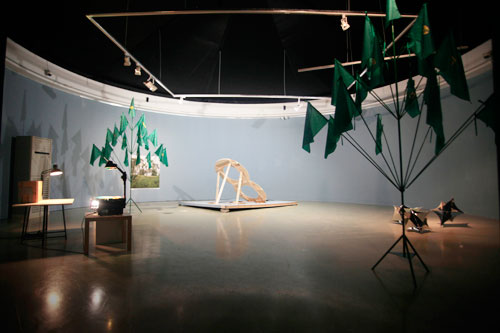 installation view
installation view
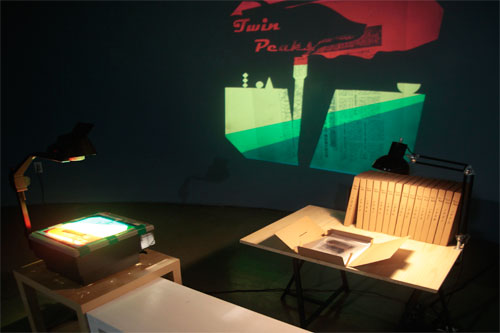 Nanji or Nanji-Newspaper Archive 270 and some news reports about Nanji Island for the period from 1977 to 1992, overhead projector, cellophane, desk, 2011
Nanji or Nanji-Newspaper Archive 270 and some news reports about Nanji Island for the period from 1977 to 1992, overhead projector, cellophane, desk, 2011
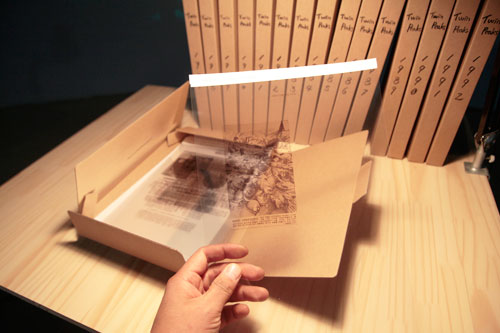 Nanji or Nanji-Newspaper Archive 270 and some news reports about Nanji Island for the period from 1977 to 1992, overhead projector, cellophane, desk, 2011
Nanji or Nanji-Newspaper Archive 270 and some news reports about Nanji Island for the period from 1977 to 1992, overhead projector, cellophane, desk, 2011
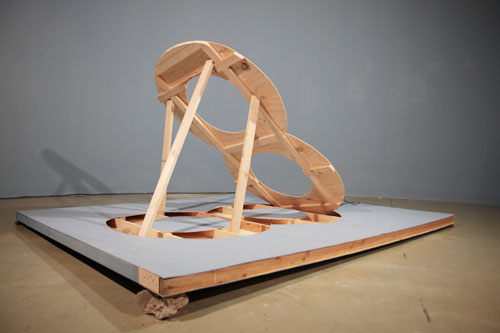 88 a used partition wall(plywood, lumber), stone, 2011
88 a used partition wall(plywood, lumber), stone, 2011
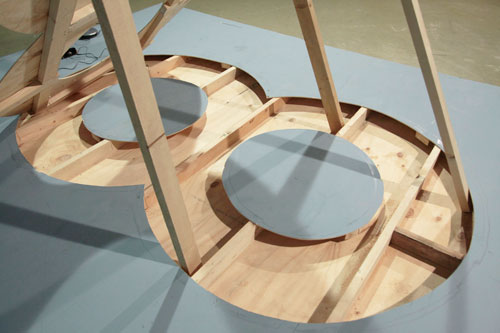 88 a used partition wall(plywood, lumber), stone, 2011
88 a used partition wall(plywood, lumber), stone, 2011
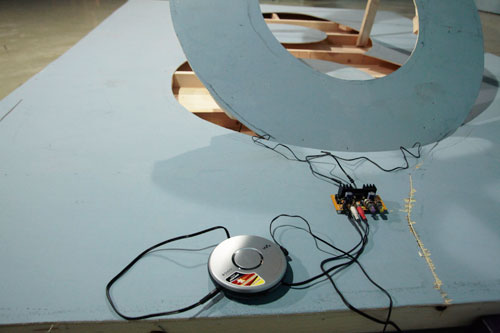 Melancholy speaker, amp, CD player, 2011
Melancholy speaker, amp, CD player, 2011
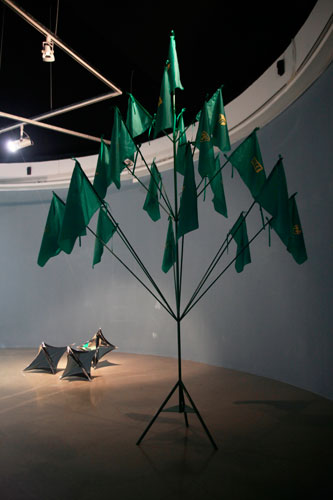 Modern Tree iron, construction company logo flags, 200x200x300cm, 2 pieces, 2011
Modern Tree iron, construction company logo flags, 200x200x300cm, 2 pieces, 2011
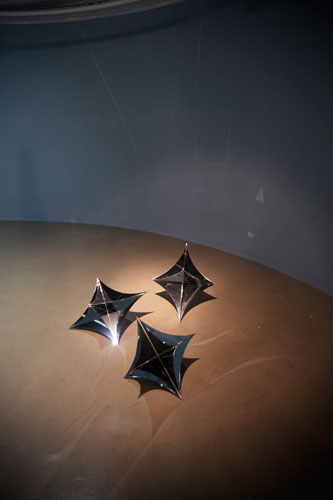 Samsung(Tree Stars) acrylic panel, 60x80cm, 3pieces, 2011
Samsung(Tree Stars) acrylic panel, 60x80cm, 3pieces, 2011
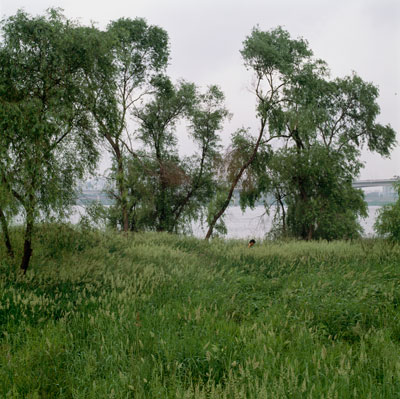 Desolate air-a Sigh 110×110㎝, photograph, 2011
Desolate air-a Sigh 110×110㎝, photograph, 2011
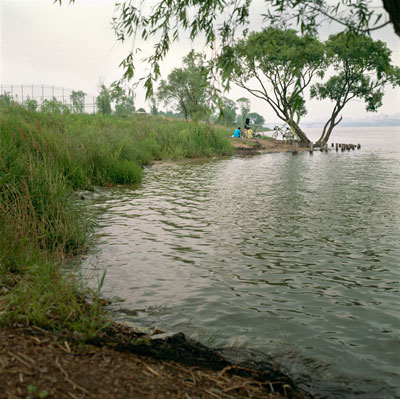 Desolate air-a Break 110×110㎝, photograph, 2011
Desolate air-a Break 110×110㎝, photograph, 2011